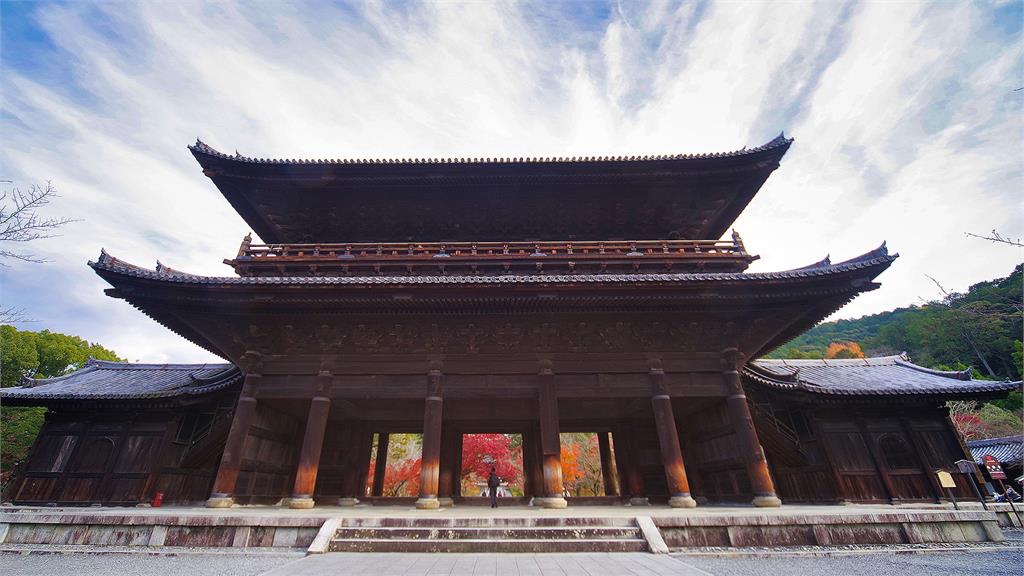Introduction
Nanzenji Temple, nestled at the foot of Kyoto’s Higashiyama mountains, is one of Japan’s most important Zen temples. This historic site is not only the head temple of the Rinzai sect of Japanese Zen Buddhism but also a perfect blend of Zen culture, traditional architecture, and natural beauty, making it a must-visit destination for travelers to Kyoto.
Key Points About Nanzenji Temple
- One of Japan’s most significant Zen temples
- Founded in the mid-13th century, originally a royal villa
- Expansive grounds with multiple subtemples
- Famous for its rock gardens, wall paintings, and aqueduct
- Spectacular autumn foliage views
Rich Historical Background
Nanzenji’s history dates back to the mid-13th century when it was initially built as a retirement villa for Emperor Kameyama. Later converted into a Zen temple, it suffered destruction during the civil wars of the Muromachi Period (1333-1573) but was subsequently rebuilt and expanded to its current impressive scale.
Main Attractions
Sanmon Gate
This imposing entrance gate, built in 1628, commemorates the soldiers who died in the siege of Osaka Castle in 1615. Visitors can climb to the gate’s balcony for a panoramic view of Kyoto.
Hojo (Main Hall)
The Hojo, formerly the head priest’s residence, is Nanzenji’s main hall. Its most famous feature is the rock garden, said to represent tigers and cubs crossing water. The sliding doors inside, painted with lifelike tigers on gold leaf, are equally noteworthy.
Aqueduct
This brick aqueduct, built during the Meiji Period (1868-1912), adds a unique charm to the temple grounds. It was part of a canal system connecting Kyoto with Lake Biwa in Shiga Prefecture.
Nanzenin Temple
A subtemple of Nanzenji, built on the site of Emperor Kameyama’s original villa. It features the emperor’s mausoleum, a temple hall, and a garden centered around a pond, particularly beautiful in autumn.
Konchi-in Temple
Founded in 1400 and moved to its current location in the early 17th century, Konchi-in boasts various buildings, wall paintings, rock gardens, a tea house, and a small subsidiary of Toshogu Shrine.
Tenjuan Temple
This small subtemple is dedicated to Emperor Kameyama’s Zen master. It features a main hall, gate, study, and two gardens – a rock garden and a pond garden, which are illuminated in the evenings during autumn.
Best Time to Visit
While Nanzenji is open year-round, autumn (particularly mid to late November) is the peak season. The fall foliage is breathtaking, especially during the evening illuminations at Tenjuan.
Getting There
- Subway: 5-10 minute walk from Keage Station on the Tozai Line (about 20 minutes, 260 yen from Kyoto Station)
- Bus: 5-10 minute walk from Nanzenji-Eikando-michi bus stop (35 minutes, 230 yen from Kyoto Station on City Bus number 5)
- Nanzenji is also a short walk from the southern end of the Philosopher’s Path, with Ginkakuji Temple at the northern end
Hours and Admission Fees
- Sanmon Gate: 8:40-17:00 (until 16:30 Dec-Feb), 600 yen
- Hojo: 8:40-17:00 (until 16:30 Dec-Feb), 600 yen
- Nanzenin: 8:40-17:00 (until 16:30 Dec-Feb), 400 yen
- Konchi-in Temple: 9:00-17:00 (until 16:30 Dec-Feb), 500 yen
- Tenjuan Temple: 9:00-16:45 (until 16:30 Nov 15-Feb), 500 yen
Note: Last admission is 20 minutes before closing. Sanmon Gate, Hojo, and Nanzenin are closed December 28-31.
Visitor Tips
- Wear comfortable shoes as there’s a lot of walking
- Bring cash as many places don’t accept credit cards
- Respect temple etiquette and maintain silence
- Book accommodations in advance for autumn visits
- Consider purchasing combination tickets to save money
- Visit early morning or late afternoon to avoid crowds
Official Website
Nanzenji Temple Official Website (Japanese)
Conclusion
Nanzenji Temple is not just a historic Zen temple, but a harmonious blend of culture, art, and natural beauty. Whether you’re a Zen enthusiast, history buff, or simply looking to enjoy stunning scenery, Nanzenji will leave a lasting impression. We invite you to experience the magic of this Kyoto treasure and immerse yourself in the perfect fusion of Zen and nature.

Leave a Reply